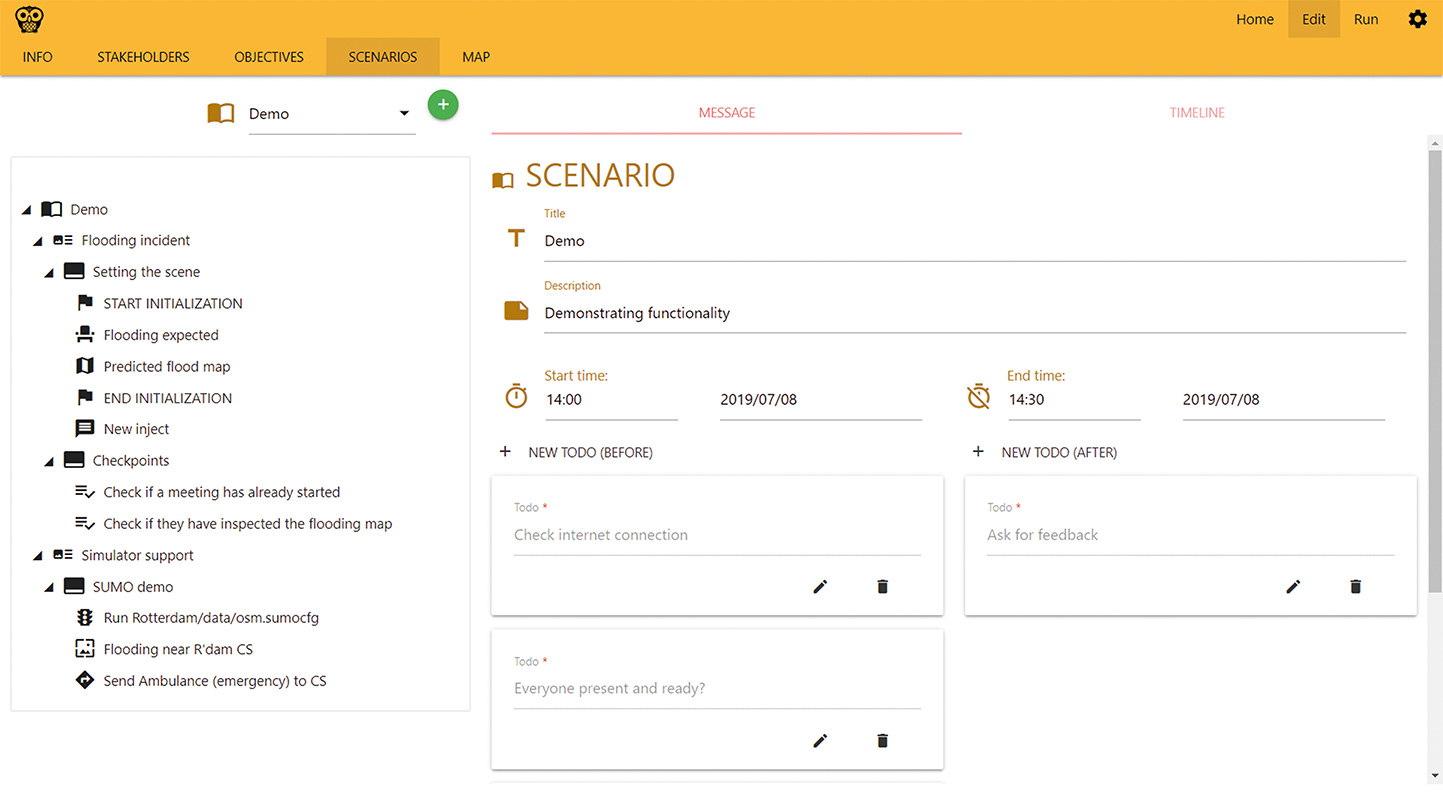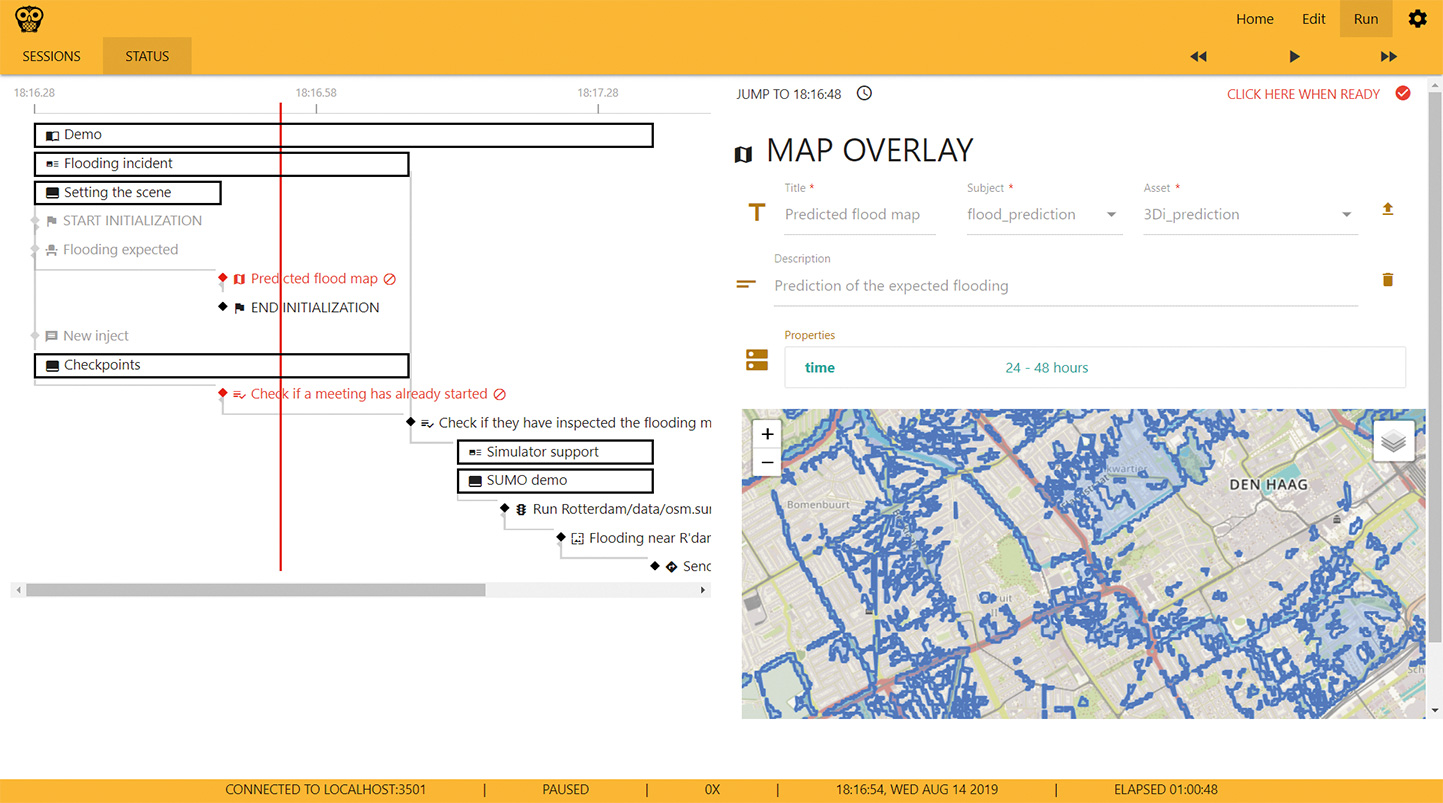create one or more
scenario’s and control
it during Execution
Evaluation coordinator
Technical coordinator
IN A NUTSHELL
What this tool
is for
In order to assess solutions during a trial, one or more scenarios are created in the TMT by CM experts and trial staff. Each scenario controls the simulation time (start, stop, pause), and specifies what is happening during the trial, so the solutions can be properly evaluated, and the trial objectives are met. In a scenario, multiple storylines can be created, each containing one or more injects, i.e. messages to simulators, solutions and role-players.
During the trial execution, those messages influence the scenario. For example, the TMT can send a message to a traffic simulator to create an incident at a certain location, or it could send a common alerting protocol message to a command & control application. Additionally, the TMT can send messages to role-players, so they can make a call or play a non-participating command centre. The trial staff can also send messages earlier or later, or resend them, offering a great level of control over the trial.

Creating a scenario in the TMT can be compared by creating a new project. However, instead of managing a project by creating subprojects, work packages and tasks, a trial scenario (=> project) consists of storylines (=> subprojects), acts (=> work packages) and injects (=> tasks, like a simple message). And whereas in a project, you assign resources, in the TMT you assign simulators, role players and observers (=> resources).
A scenario is created while preparing the trial and is executed during the trial. And like a project manager, controlling the sequence of the tasks during the lifetime of a project, the trial staff is also able to control the sequence of inject/messages during the lifetime of a scenario. For example, a scenario may specify that initially water levels rise, next a dyke breaks and a flooding starts. In parallel, a traffic accident causes an ammonia cloud to threaten a part of the city. Its output is a time sequence of messages, for example to instruct a simulator to start a flooding, a role player to call 112 or an observer to watch out for a particular use of a solution.

